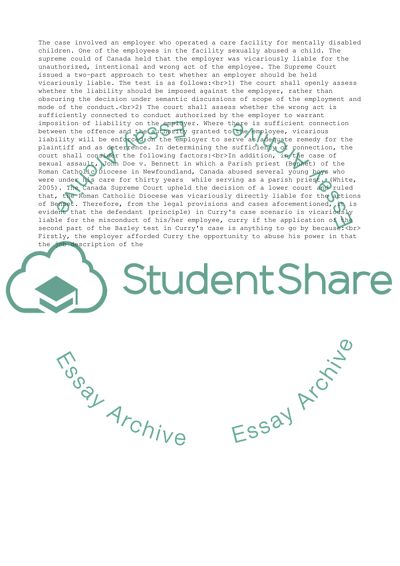Cite this document
(“Employers Liability for its Employees Sex Abuse Case Study”, n.d.)
Employers Liability for its Employees Sex Abuse Case Study. Retrieved from https://studentshare.org/business/1661934-employers-liability-for-its-employees-sex-abuse-case
Employers Liability for its Employees Sex Abuse Case Study. Retrieved from https://studentshare.org/business/1661934-employers-liability-for-its-employees-sex-abuse-case
(Employers Liability for Its Employees Sex Abuse Case Study)
Employers Liability for Its Employees Sex Abuse Case Study. https://studentshare.org/business/1661934-employers-liability-for-its-employees-sex-abuse-case.
Employers Liability for Its Employees Sex Abuse Case Study. https://studentshare.org/business/1661934-employers-liability-for-its-employees-sex-abuse-case.
“Employers Liability for Its Employees Sex Abuse Case Study”, n.d. https://studentshare.org/business/1661934-employers-liability-for-its-employees-sex-abuse-case.


